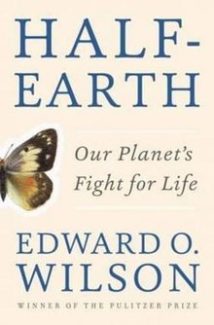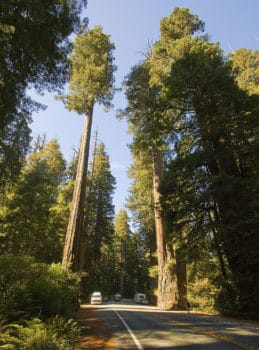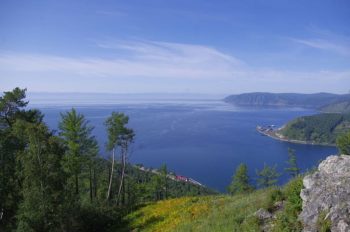Half full or half empty…?
Author: Edward O. Wilson
 Which parts are essential? As humanity slowly dismantles and unravels the world’s ecosystems, bending them towards its ends, how will we know when we’ve gone too far? Is it already too late? In Half-Earth, acclaimed naturalist and author E.O. Wilson – still going strong at age 90 – argues that the moment of reckoning is soon upon us and that only with decisive action can we avert disastrous ecologic collapse. It’s some truly sobering stuff.
Which parts are essential? As humanity slowly dismantles and unravels the world’s ecosystems, bending them towards its ends, how will we know when we’ve gone too far? Is it already too late? In Half-Earth, acclaimed naturalist and author E.O. Wilson – still going strong at age 90 – argues that the moment of reckoning is soon upon us and that only with decisive action can we avert disastrous ecologic collapse. It’s some truly sobering stuff.
Serving as the last piece of a trilogy – preceded by The Social Conquest of Earth and The Meaning of Human Existence – the book lays out how human activity is slowly pulling apart the intricate ecologic webs that support all of life on Earth. Using numerous specific examples, Wilson describes how even the simplest actors in the web of life – from ants to freshwater mollusks to rhinos – can perform crucial roles.
After describing numerous examples of recent extinction and exploring the worrisome potential for millions more, Wilson goes on to outline how he’s chosen some essential habitats on each continent that simply must be preserved if we are to have any hope of avoiding a full blown anthropogenic extinction event. From the redwood forests in California to the Pantanal wetlands in southern Brazil to Lake Baikal in Siberia, he lists more than thirty unique habitats that can still be saved and that contain vast amounts of essential biodiversity. The collection represents a daunting challenge, but at the same time it is a concrete list of things that can actually be done, helping to avoid the very real danger that we do nothing at all, paralyzed by indecision at the immensity of the task before us.
As he assembles his argument, he makes frequent reference to what he calls “the most dangerous world view”, the idea that technologists can simply use our vast knowledge to take the reins and manage Earth’s environment on our own. Wilson derides such hubris, pointing out that we’ve only described a small fraction of the 8-9 million species of plants, animals, fungi and microbes that currently inhabit the planet. We don’t even have names for them, much less any understanding of how they fit into countless ecologic webs that we all rely on.
On this same note, the book also serves as a plea for more naturalistic science, performed by the kinds of scientists who focus on a single species or genus, striving to fully understand their place in the ecosystem. Wilson makes a very convincing argument that they may be the ones who save us. However, funding for this kind of science has dwindled over the years, as sexier, high-tech endeavors have gathered the lion’s share.
Somehow, the author manages to strike a note of optimism in the final pages, detailing some recent conservation success stories. I’m not sure that I fully share his optimism in humanity, but that doesn’t take away anything from his overall thesis, which is that we must act now and that the possible routes to success are probably quite limited at this point. His Half-Earth plan would probably work. The idea that we have the political will, unity and leadership to implement it is another question entirely.
— D. Driftless
Redwoods photo by Acroterion/ Baikal photo by W0zny (both CC BY-SA 3.0)
[AMAZONPRODUCTS asin=”1631490826″]
- Best Non-Fiction of 2016 - February 1, 2017
- Little Free Library Series — Savannah - May 22, 2015
- Little Free Library Series — Wyoming - November 30, 2014




